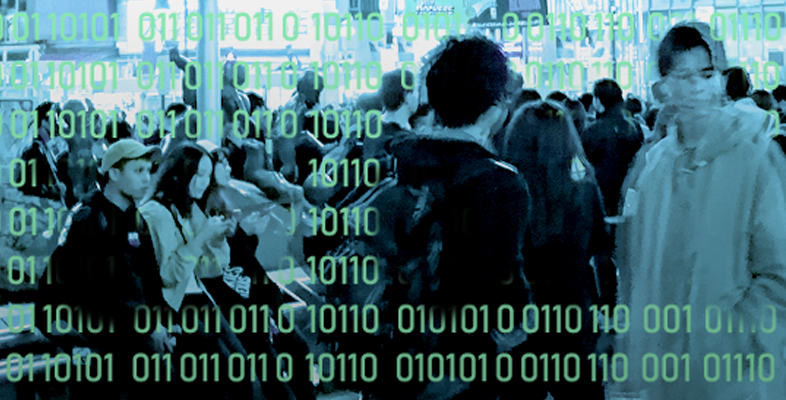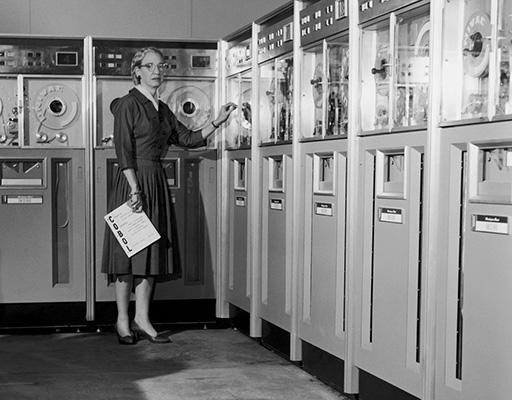1.2 The computer
There were very few computers in the 1950s, and those in existence were treated as objects of wonder with almost mythical powers. They were nothing like the computers of today. For one thing they were huge, as shown in Figure 2. They were also delicate and consumed a lot of electricity, wasting much of it as heat.
Today, however, a computer is just another item stocked in supermarkets alongside toothpaste and dog food. And as computers have become cheaper and smaller, they have been incorporated into a kaleidoscopic range of devices that bear no resemblance to what was once thought of as a computer. Powerful computers now sit at the heart of objects as diverse as smartphones and games consoles, cars and vacuum cleaners. The cost of computer power continues to decrease, making it possible to incorporate computer technologies into almost any object, no matter how small, cheap or disposable. And these smart devices are ‘talking’ to one another, not just within a single room or building but around the world via the internet, using the world wide web (see Box 1). Thus, even as the computer vanishes from sight, it becomes vastly more powerful and ever-present – to use a term you’ll become very familiar with, it is now ubiquitous.
In the smartphone, two previously separate technologies – computers and mobile telephone systems – have become converged in one device. This convergence of computing and telephone systems has resulted in new goods and services for people to buy and use. For example, people who were not previously interested in computers are happy to take photographs on their mobile phones and share them. In this situation, the computer in the mobile phone handles the processing of the photograph and enables it to be shared by email or uploaded to social media sites.
Activity 1 (exploratory) Growth in use of technologies
Can you think of another technology that has made the transition from novel to commonplace, like telephones and computers?
Discussion
There are many possible answers to this question. We thought of washing machines, which have advanced from hand-driven drums to the automatic machines of today.
Box 1 The internet and the web
You will have come across the terms internet and web. Although in everyday life people tend to use these terms interchangeably, in reality they are two separate (although related) entities.
The internet is a global network of networks: an internetwork (hence its name). It is the infrastructure that connects computers together.
The web (short for world wide web), on the other hand, is a service that links files across computers, allowing us to access and share information. Thus the web is a software system that has been built upon the hardware of the internet.
Apart from anything else, this means that it is technically incorrect to refer to ‘searching’ or ‘browsing’ the internet. When you carry out an online search, you are in fact searching the web!

